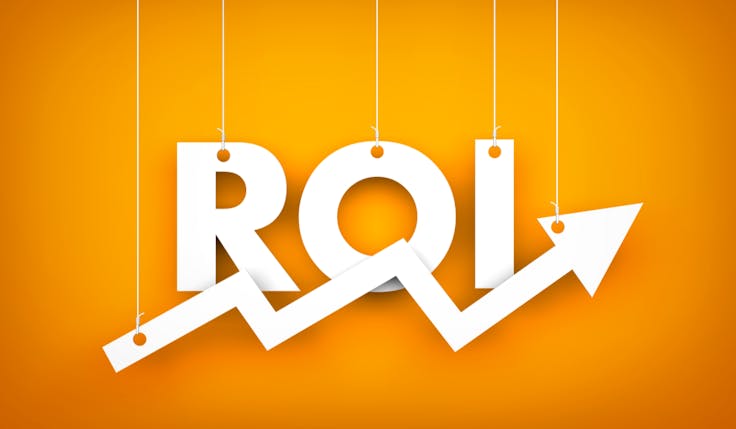ROI rises when advertisers commit to higher media spend, study shows
A yearly media investment of around £30m across seven to eight channels will generate the best ROI for most advertisers, but there are still major risks involved, says econometrician Dr Grace Kite.

Average return on investment (ROI) for every £1 spent on media increases as advertisers spend larger amounts, new research reveals.
The sharpest rise takes place between a yearly media spend of £2m and £10m, where ROI rises from £2 to £8 (see chart below). ROI then increases steadily to a peak of approximately £13, which is achieved when advertisers spend in the region of £30m.
However, ROI begins to tail off as advertisers increase spend above £30m, suggesting that to be the optimum yearly media spend for advertisers on average. By the time advertisers are spending between £70m and £80m, ROI drops back to around £2, as the additional media is either reaching the same people or reaching people who will never buy their product.
The analysis is based on the Advertising Research Community (ARC) database of effectiveness results from everyday campaigns, which have not been entered into or won any awards. It includes 343 cases covering three years of data, carried out by econometricians at Magic Numbers, OMG, D2D, IRI, and VCCP Media.

Advertisers included in the database range from small to large advertisers, all of which have invested in econometrics to measure the results of their campaigns. The conclusion that ROI is maximised at high media budgets is true even after controlling for the size of advertisers’ businesses.
The “hump” is also seen when looking at individual sectors and categories, econometrician and Magic Numbers founder Dr Grace Kite tells Marketing Week ahead of unveiling the research at Cannes Lions 2022. Kite, who launched the ARC project, says the plan is to properly analyse impact for each category in future.
ROI also rises when a campaign uses more media channels, the research finds. Average ROI per £1 when one to two media channels are used is £2, rising to £2.50 for three to four channels, £4.50 for five to six channels, and passing £5 for seven to eight channels.
Advertisers need to get over their fear of commitment
“[This research] goes to the heart of one of the biggest problems that CMOs have: that they can’t get budgets past the CFO and they can’t sign off big amounts of money because it’s risky,” Kite says.
“I’m hoping this will help to frame that discussion with the CFO. I meet a lot of CFOs and business people in general… and actually, they find it very convincing if you can say, we’ve got some research that shows this [advertising] works, and then we’ve got over here some other research that shows that it will work best if we really go for it. That’s the sort of conversation that can be helpful.”
However, Kite notes that £30m is “a lot of money” for any business. Three-quarters (75%) of the advertisers in ARC were “either unable or unwilling” to make that investment. Yet, for some advertisers it will be a “mistake” to not be spending at that level, Kite says.
“Where your availability is enough to justify reaching that many people with your message, this data shows it’s worth it. You could be making a mistake if you’ve got a great campaign but don’t show it enough that it cuts through,” she explains.
But businesses are right to be concerned about the risks involved in advertising investments, Kite adds. While some campaigns pay off well, the ARC database reveals 70% of advertisers are only making returns of £2 or less in revenue per £1 spent.
 “The real conclusion is to do enough tests to feel really certain that you’ve got the right creative, and then put a lot of money behind it. That is the vision and testing is very much a part of what I see as the answer to this conundrum here,” Kite says.
“The real conclusion is to do enough tests to feel really certain that you’ve got the right creative, and then put a lot of money behind it. That is the vision and testing is very much a part of what I see as the answer to this conundrum here,” Kite says.
Tests should also include making sure there are enough people in the market to buy the product and establishing the best media channels to use.
Kite adds that ARC is looking for more UK econometrics companies to join the initiative and contribute their cases to the databased. Of the 17 econometrics providers in the UK, the project currently has five involved.






